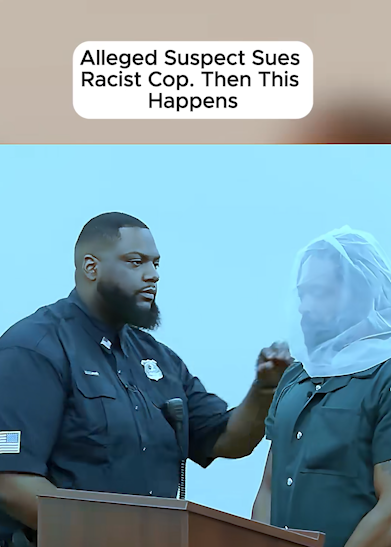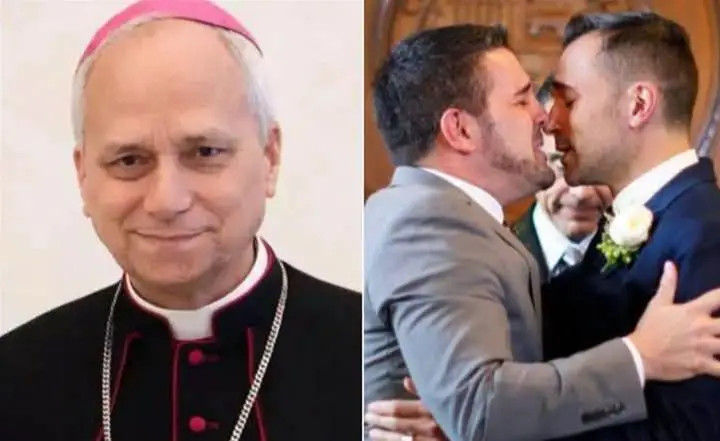A brief yet striking courtroom clip has been rapidly circulating on Facebook and TikTok, titled: “Accused Individual Takes Legal Action Against Racist Officer. Then This Unfolds.” In this 15-second video, a uniformed police officer stands at a podium while a defendant—wearing a dark vest and a sheer white mesh hood—faces him. The striking visuals alone have sparked thousands of reactions and shares, but the true context behind the footage remains unclear.
The clip begins with the defendant, face obscured, standing next to the officer as if awaiting a decision. A caption claims the hooded man filed a lawsuit accusing the officer of racial discrimination. Without additional information, viewers are led to believe the case is real and happening in an actual courtroom. However, no confirmed news reports or public legal documents support the existence of such a lawsuit or event.
Despite this, the video has gone viral. The contrast of a Black officer and a hooded individual alleging racial bias has stirred heated online conversations about law enforcement, prejudice, and responsibility. Some viewers commend the officer’s composed behavior, implying the “surprise” hinted at in the caption is that the officer exemplifies professionalism rather than wrongdoing. Others believe the footage might be staged or scripted to provoke strong emotional reactions rather than capturing an authentic court proceeding.
Part of the confusion comes from how social media platforms promote eye-catching headlines and ambiguous narratives. Phrases like “Then This Unfolds” entice users to watch and engage before verifying the facts. This tactic, once typical of clickbait websites, is now common in short video formats. By the time skeptics suggest the clip may be fabricated, it often has already amassed hundreds of thousands of views and shares.
The hood itself has also become a topic of debate. Some interpret it as a symbol of punishment or shame, while others think it’s a theatrical prop meant to conceal the actor’s identity. Without verified sources, it’s impossible to know if the hood has any actual procedural use or if it was purely added for dramatic effect.
Regardless of whether the video is authentic, it highlights how quickly stories can take shape online. A single caption can frame a complex or fictional scenario as undeniable proof of prejudice, misconduct, or injustice. Here, the narrative of a “racist officer” being sued is upended by showing a Black police officer and a hooded defendant, creating a moment crafted to shock and be widely shared.
Until reliable sources confirm the identities involved or the origin of the video, the true story behind “Accused Individual Takes Legal Action Against Racist Officer. Then This Unfolds” remains unknown. What is clear is how effectively such content leverages controversy to spread far beyond its original posting, influencing public opinion through just a few provocative words and brief footage.



